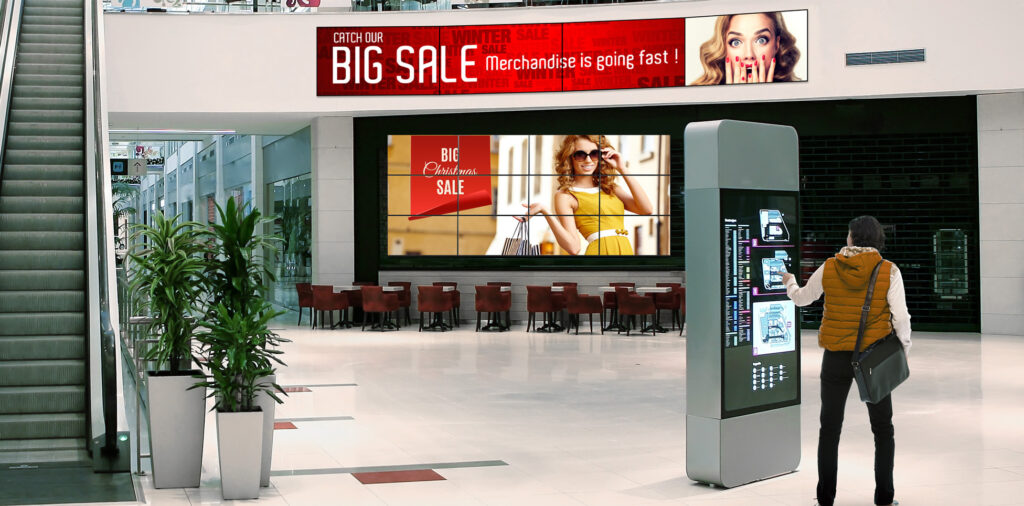In today’s fast-paced digital landscape, digital sign displays play a crucial role in delivering engaging and dynamic content to attract audiences. Whether used in retail stores, corporate environments, or public spaces, selecting the right digital signage can directly impact communication efficiency and customer experience. Below, we explore the key features to look for in digital signs to help you make the best choice for your needs.
1. Display Resolution and Screen Quality
The first and foremost factor to assess is the resolution of the display. A higher resolution ensures clearer, sharper images and makes a noticeable difference, especially for content involving text, graphics, or videos. Look for at least Full HD (1920×1080) displays, with 4K (3840×2160) increasingly becoming the standard.
Additionally, consider the brightness of the screen, particularly if the signage will be in outdoor or sunlit environments. Look for screens with at least 500-700 nits for indoor use and 1,500+ nits for outdoor applications to maintain visibility under direct light.
Lastly, refresh rates are equally essential. A screen with at least a 60Hz refresh rate will prevent flickering and ensure smooth content playback.
2. Content Management Software (CMS) Integration
A reliable CMS platform simplifies how you manage, schedule, and update your display’s content remotely. When evaluating digital signage systems, ensure they offer user-friendly and flexible CMS software that allows seamless content changes across multiple devices.
Features like real-time updates, content scheduling, and cloud-based access should be prioritized. Some advanced CMS tools also offer AI-powered analytics, helping businesses tailor content based on audience preferences or environmental conditions.
Integration with other tools, such as POS systems or social media feeds, can also boost interactivity and keep your content fresh.
3. Connectivity Options
A good digital signage display needs to support a variety of connectivity options to ensure easy integration with external devices and networks. Make sure the signage offers HDMI, DisplayPort, USB, and VGA ports, along with Wi-Fi, Bluetooth, or Ethernet capabilities for seamless content streaming.
Some advanced signage systems even offer 5G or LTE support, enabling uninterrupted operations in environments where Wi-Fi is unreliable. Remote monitoring and control of displays via network connectivity ensure that issues are identified and resolved promptly.
4. Durability and Reliability
Not all digital sign displays are built to last under all conditions. For outdoor usage, look for weatherproof and vandal-resistant enclosures rated IP65 or higher to protect against dust, rain, and extreme temperatures. For indoor environments, displays should still be built with industrial-grade components to support 24/7 operation without downtime.
Assess the warranty period and after-sales support available from the manufacturer. Look for at least 3 to 5 years of warranty to safeguard your investment and ensure smooth repairs or replacements when needed.
5. Interactivity and Touchscreen Capabilities
Interactive signage is growing in popularity across various industries. If your use case involves customer engagement, consider investing in touch-enabled displays. Touchscreen displays open up opportunities for wayfinding kiosks, interactive menus, and self-service checkouts.
The touchscreen should support multi-touch technology, meaning it can recognize multiple points of contact simultaneously, which is crucial for applications like pinch-to-zoom or drag-and-drop functions.
Interactive digital signage also enhances customer experience by offering personalized content, such as product recommendations or directions based on customer input.
6. Energy Efficiency and Cost-Effectiveness
Energy consumption is a critical factor, especially for businesses that run their signage for long hours. Look for displays with LED-backlit technology that consumes less power compared to traditional LCDs. Many signage systems now come with power-saving modes that automatically adjust brightness or turn off when not in use.
Moreover, the total cost of ownership (TCO) should factor into your decision. While some displays may have a higher upfront cost, they could save money in the long run through lower maintenance requirements and energy savings.
Conclusion
Choosing the right digital signage display involves evaluating several essential factors, including resolution, content management capabilities, durability, connectivity, and energy efficiency. Prioritizing these elements ensures your signage delivers high-quality content, engages viewers effectively, and operates without interruptions. Keep in mind that investing in the right solution now will save you time, money, and hassle in the future.
